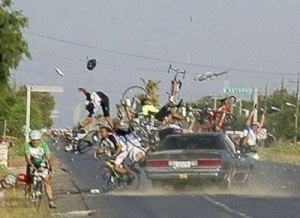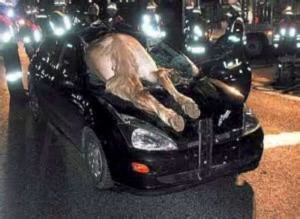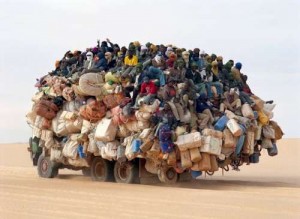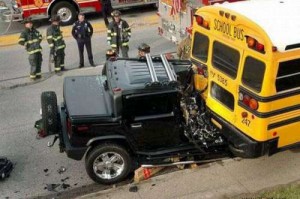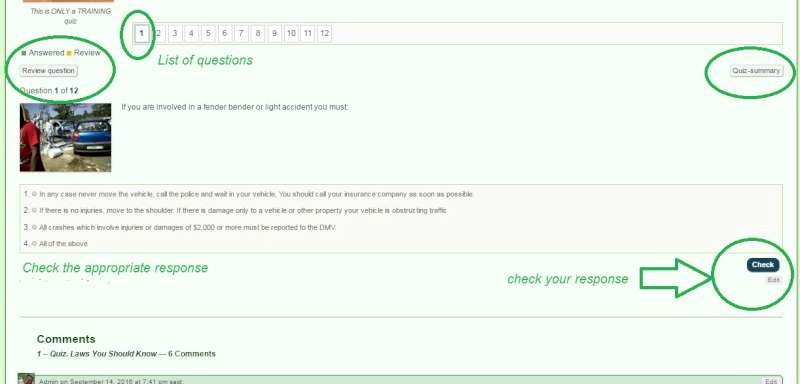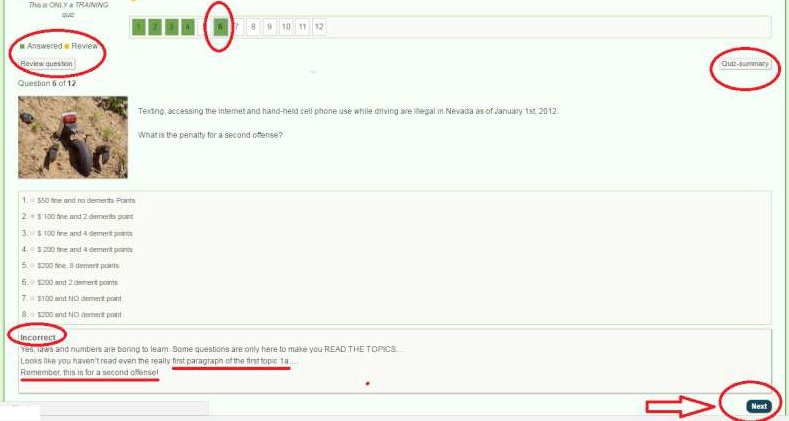ONLINE DRIVERS' ED PREVIEW
This is ONLY a preview. Click on the button below for the active website
Our Online Driver' Ed Course is Registered and Approved by the DMV
If you have a problem, question, or suggestion, please contact support on our Chatroom at the bottom left of each page.
This course is much more than passing an exam only to get a certificate of completion. It is a tool to train your brain on many rules and regulations so you will follow them instinctively and rightfully for the rest of your life. PLEASE READ THE MATERIAL OFFERED.
Course Materials
PC or laptop, internet access, free time, background soft music, A smile on your face, a sofa, and a glass of Soda,
Lesson 1 / Topic 1 (Preview)
followed by Quiz Preview
LAWS YOU SHOULD KNOW
Cell Phones & Texting
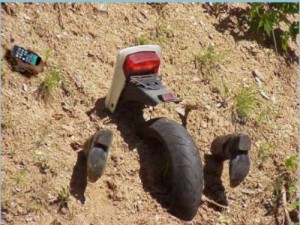 Texting, accessing the internet, and hand-held cell phone use while driving is illegal in Nevada as of January 1st, 2012.
Texting, accessing the internet, and hand-held cell phone use while driving is illegal in Nevada as of January 1st, 2012.
The fines are :
$50 for the first offense in seven years,
$100 for the second and
$250 for the third and subsequent offenses.
Fines are subject to doubling if the offense occurs in a work zone. Courts may assess additional administrative fees.
The first offense is not treated as a moving violation. A second or subsequent offense carries 4 demerit points.
Exceptions

Hand-free cellular phone
- You can talk using a hands-free headset and, while making voice calls, touch the phone to “activate, deactivate or initiate a feature or function on the device.
- Law enforcement officers, firefighters, or emergency medical personnel acting within the scope of their employment.
- a person reporting a medical emergency, a safety hazard, or criminal activity.
- Drivers using a voice-operated navigation system affixed to the vehicle or those riding in autonomous vehicles.
- Drivers using citizen band or other two-way radios that require a license and have a separate, hand-held microphone.
- Utility workers responding to an outage or emergency and using devices provided by the company.
- Amateur radio operators providing communications services during an emergency or disaster.
Following a fender bender or a light crash
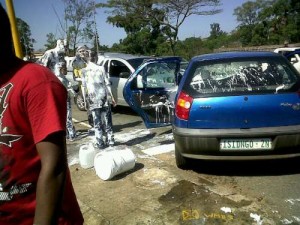 According to the U.S. Census Bureau, there are more than 10 million car collisions every single year. Yet many people are unsure of what to do once they get into one of these minor car accidents.
According to the U.S. Census Bureau, there are more than 10 million car collisions every single year. Yet many people are unsure of what to do once they get into one of these minor car accidents.
- If there are no injuries, move to the shoulder. If there is damage only to a vehicle or other property your vehicle is obstructing traffic
- If the vehicle can be moved safely, move it to a location that does not obstruct traffic and then return to the scene.
- All crashes which involve injuries or damages of $750 or more must be reported to the DMV.
- If a police officer does not investigate the incident, all of the involved parties must file reports on DMV Form SR-1 within 10 days.
Emergency vehicles
Drivers in Nevada have certain duties when approaching a stopped emergency vehicle making use of flashing lights. These apply to all types of emergency vehicles including tow trucks.
In the absence of direction by a peace officer, the driver of a vehicle approaching a stopped emergency vehicle must:
- Decrease the vehicle speed to a speed that is reasonable and proper and less than the posted speed limit.
- Proceed with caution.
- Be prepared to stop; and
- If possible, drive in a lane that is not adjacent to the lane in which the emergency vehicle is stopped unless the roadway, traffic, weather or other conditions make doing so unsafe or impossible.
.
Encounter with an emergency vehicle (code3)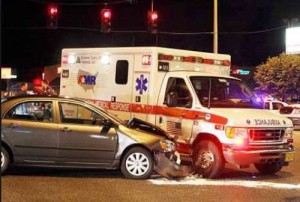 Upon the immediate approach of an authorized emergency vehicle which is sounding a siren and which has at least one lighted lamp the surrounding traffic shall, except as otherwise directed by a traffic officer, do the following:
Upon the immediate approach of an authorized emergency vehicle which is sounding a siren and which has at least one lighted lamp the surrounding traffic shall, except as otherwise directed by a traffic officer, do the following:
.
[shc_shortcode class="shc_mybox"]1 ) The driver of every other vehicle shall yield the right-of-way and shall immediately drive to the right-hand edge or curb of the road, clear of any intersection, and thereupon shall stop and remain stopped until the authorized emergency vehicle has passed.
.
2) A person driving a vehicle in an exclusive or preferential use lane shall exit that lane immediately upon determining that the exit can be accomplished with reasonable safety.
.
Use your common sense.
If you’re driving south on Interstate 95, and you see a CDF fire equipment rolling northbound with their lights and siren on, you may slow down but the emergency vehicle will not cross the safety barrier separating the 2 opposite lanes, therefore you do not have to pull over and stop as it might create havoc on a freeway.[/shc_shortcode]
.
Bicycles
Motorists passing a bicycle must move into an adjacent lane to the left, if possible. If not, the motorist must pass with at least three feet of space between the vehicle and the bicycle.
Motorists may be charged with reckless driving if they are at-fault in any collision with a bicyclist or a pedestrian. Penalties include a driver's license suspension.
Seat Belts
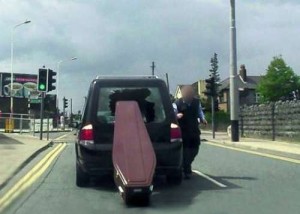
Front and rear seat occupants of almost all passenger vehicles to wear safety belts or ride in an approved child restraint system. Vehicles 1968 and newer must be equipped with lap belts. Vehicles 1970 and newer must be equipped with lap belts and shoulder belts for the front seats.
Children Safety Seats
Children under age 6 and who weigh less than 60 pounds must be in an approved child restraint system Failure to restrain children under age 6 and weighing less than 60 pounds may result in fines, community service, and or the suspension of your driver’s license.
Never leave a child age 7 or younger unattended in a vehicle if the conditions present a significant risk to the health and safety of that child unless the child is being supervised by and within sight of, a person at least 12 years old. Passengers under 18 may not ride in the back of a pickup or flatbed truck. This does not apply, however, to farming and ranching activity, parades, or to camper shells or slide-in campers.
Pets on Board
It is illegal to leave a dog or cat unattended in a vehicle during periods of extreme heat or cold. Law enforcement, firefighters, and other officials may use reasonable force to rescue the animal.
Teen Driving Restrictions
 You must be 16 years old to apply for a full license. You must also:
You must be 16 years old to apply for a full license. You must also:
- hold a valid instruction permit for at least six months before applying
- have no at-fault crashes in the six months before applying
- have no moving violation convictions in the six months before applying
- have no alcohol or drug convictions of any kind in the six months before applying
Passengers
Drivers under 18 cannot transport any passenger under the age of 18,
Except for immediate family members, for the first six months after licensing.
Curfew
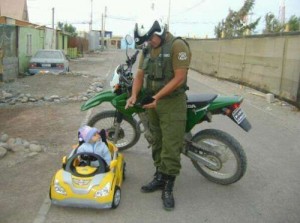
Drivers under 18 may not drive between the hours of 10 p.m. and 5 a.m. unless they are traveling to or from a scheduled event such as work or a school event. This curfew remains in effect until age 18.
Speeding
Nevada has a Basic Rule for driving at reasonable and proper speeds. This means that in addition to any posted speed limits, you must consider the amount and type of traffic, weather, road conditions, and other factors. The proper speed may be considerably less than the posted limit.
Turn or don't turn Right on Red
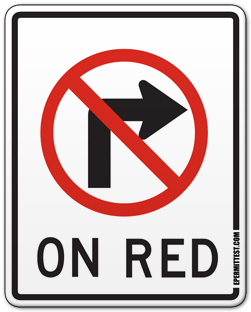
You are allowed to turn right on a red light after coming to a full stop, unless otherwise posted.
You must be in the extreme right-hand lane and yield to pedestrians and all traffic moving through the intersection.
U-Turns
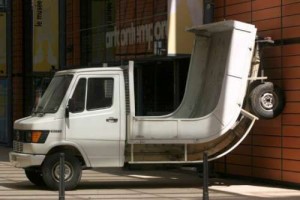 U-turns are generally allowed if they can be completed safely. In business areas, you must be at an intersection or on a divided highway where an appropriate opening exists. U-turns are not allowed where prohibited by a traffic sign or signal, or if there is less than 500 feet visibility in both directions.
U-turns are generally allowed if they can be completed safely. In business areas, you must be at an intersection or on a divided highway where an appropriate opening exists. U-turns are not allowed where prohibited by a traffic sign or signal, or if there is less than 500 feet visibility in both directions.
School Buses
Drivers are required to stop for school buses when students are boarding and departing and when a bus is displaying its flashing red lights.
.
On divided highways with a median or other physical barrier, traffic moving in the opposite direction does not have to stop. On all other roads, traffic in both directions must stop.
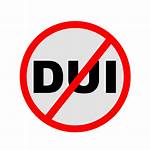 Driving Under the Influence
Driving Under the Influence
Failure to submit to a breath, blood, or urine test as directed by a police officer results in a driver’s license revocation of at least one year. A blood sample can be drawn involuntarily if the officer obtains a warrant or court order.
- Legal Limits .08 percent blood alcohol level or any detectable amount of a controlled substance. (.02 if under 21, .04 in commercial driving)
- Driver License revoked for at least 90 days upon arrest.
- The vehicle may be impounded.
These are administrative penalties that are taken immediately. Courts impose additional criminal penalties upon conviction.
Traffic Stops & Racial Profiling
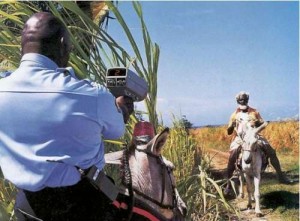 “Racial profiling” means reliance by a peace officer upon the race, ethnicity, or national origin of a person as a factor in initiating action when the race, ethnicity, or national origin of the person is not part of an identifying description of a specific suspect for a specific crime.
“Racial profiling” means reliance by a peace officer upon the race, ethnicity, or national origin of a person as a factor in initiating action when the race, ethnicity, or national origin of the person is not part of an identifying description of a specific suspect for a specific crime.
Nevada law requires you to pull to the right and stop when signaled to do so by a police officer. There is apprehension for all involved during a routine stop. The person being pulled over is fearful of getting a ticket or because you’re not sure why you were stopped, and the officer is fearful for their safety with the unknowns for any given situation.
Drivers who are stopped by law enforcement officers are recommended to follow all legal instructions they receive from the officer. [shc_shortcode class="shc_mybox"]
To assist the officer in determining that you are not a wanted fugitive, please keep your hands in sight at all times. Upon initial contact, keep your hands on the steering wheel unless instructed by the officer to do otherwise. When the officer asks for papers, let the officer know what you are intending to do, such as, “my registration is in the glove box.” This allows the officer to know your intention ahead of time. If for some reason there is a firearm in the vehicle, advise the officer upon initial contact. The police don’t like surprises any more than you do.
If you are stopped at night, turn on the vehicle’s dome light to assist in seeing what is present in the car. Be prepared for bright lights. Police use their lights so they can see items harmful to them.
Please stay in the car unless directed by the officer to exit the car. Your cooperation will be appreciated and aid in the safety of all parties-including your own
[/shc_shortcode].
THIS WAS A PREVIEW FOR OUR FIRST LESSON FROM ONLINE DRIVERS ED
Please go to WWW.LASVEGASNVDRIVERSED.COM
Price $40 including the certificate of completion needed for your Driver's License.
DMV campaigns
[shc_shortcode class="shc_mybox"]
Yellow Dot
Yellow Dot Nevada is a life-saving program that alerts first response at a vehicle-incident scene that an occupant may have medical issues. This information is vital in the “golden hour” following an accident or roadside medical episode.
A yellow dot decal on the rear window of the driver’s side of the vehicle alerts the first response to check the glove compartment, where a Yellow Dot kit contains vital medical information about the driver and/or passengers.
Yellow Dot kits are free and available in locations throughout the Las Vegas Valley.
[/shc_shortcode]
[ms_button style="3d" link="https:www.lasvegasnvdriversed.com" size="medium" shape="rounded" shadow="no" block="no" target="_self" gradient="no" color="#B7ECAD" text_color="#0F1015" icon="fa-graduation-cap" icon_animation_type="swing" border_width="1" class="" id=""]Proceed to Online Drivers Ed Website[/ms_button]
QUIZ PREVIEW
